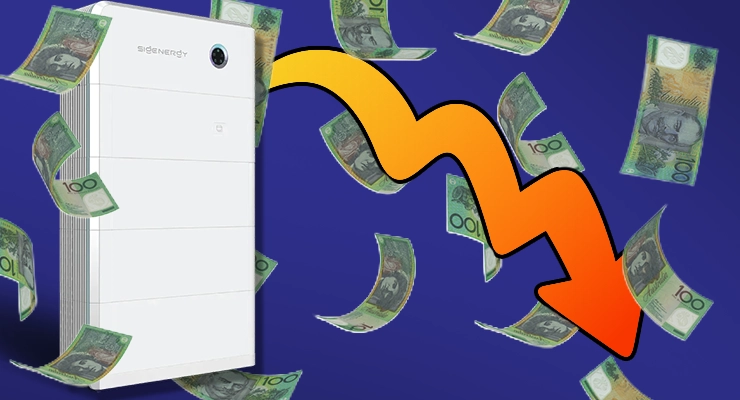
Fast read
Australia's federal solar rebate, the Small-scale Renewable Energy Scheme (SRES), reduces annually as a planned phase-out to help the solar industry become self-sufficient. The program is legislated to end on December 31, 2030. The rebate's value decreases every January 1st, meaning the financial benefit is highest for those who install their systems sooner rather than later.
Why does the federal solar rebate reduce every year and end in 2030?
If you’ve started getting quotes for a new solar power system, you’ve likely been told that the federal government “rebate” or discount you receive is higher now than it will be next year. This can feel like a sales pressure tactic, but it’s entirely true.
This upfront discount is a key part of making solar accessible for millions of Australians, but it’s also a temporary measure with a firm end date. Understanding why it reduces and eventually ends can help you make a confident and timely decision about your investment in renewable energy.
What exactly is the federal solar rebate?
What most people call a “rebate” is technically an incentive program called the Small-scale Renewable Energy Scheme (SRES). It was introduced by the federal government to encourage homeowners and small businesses to install renewable energy systems like rooftop solar.
Here’s how it works in simple terms:
- Creating Certificates: When you install an eligible solar system, you generate a number of digital certificates called Small-scale Technology Certificates (STCs).
- Calculating the Number of STCs: The number of STCs you get is based on the size of your system and its location in Australia, as well as the year of installation. It’s calculated based on the estimated amount of electricity your system will produce until the scheme officially ends in 2030.
- Getting the Discount: You don’t have to handle these certificates yourself. Your solar installer will typically manage the process for you, claiming the STCs and giving you an upfront discount on your system’s total price in exchange.
This process is what has made going solar significantly more affordable and has been a major driver behind Australia’s world-leading adoption of rooftop solar.
Why is the rebate designed to decrease and end?
The SRES was never intended to be a permanent fixture. The scheme was strategically designed to reduce over time and conclude in 2030 for two main reasons: as an initial industry support and to ensure a gradual transition.
The primary goal was to kickstart Australia’s renewable energy industry. By providing a significant financial incentive, the government helped offset the initially high costs of solar technology, making it an attractive option for the public. This created demand, which in turn fostered competition, innovation, and economies of scale within the solar industry. As the industry has matured and the cost of solar technology has fallen dramatically, the need for a strong government subsidy has lessened.
Instead of ending the incentive abruptly, which could have shocked the market, the government designed a gradual, 15-year phase-out. This provides a smooth and predictable transition, allowing the industry and consumers to adapt over time. The market can slowly adjust to the real cost of solar systems without the support of the rebate, ensuring stability for both installers and customers.
How does the reduction happen each year?
The annual reduction is built into the formula for calculating STCs. The number of certificates your system is eligible for is based on its expected power generation over a “deeming period,” which is the number of years left until the scheme ends in 2030.
On 1 January each year, the deeming period shortens by one year.
For instance, a system installed in 2025 has a deeming period of six years (from 2025 to the end of 2030). If you wait until 2026 to install the exact same system, the deeming period will only be five years. This means fewer STCs are generated, resulting in a smaller upfront discount on your system.
This legislated, non-negotiable reduction means the financial incentive to install solar is always highest right now.
What does this mean for my decision to go solar?
Understanding that the SRES is in its final years should be a key factor in your decision-making process. The key takeaway is simple: the longer you wait, the lower the government incentive will be. Delaying your installation from one calendar year to the next directly reduces the upfront discount you will receive.
While the rebate is an important factor, it’s also crucial to focus on the long-term benefits of solar energy, such as:
- Reduced Electricity Bills: Generating your own power significantly cuts your reliance on the grid and protects you from rising energy prices.
- Energy Independence: Pairing solar with a battery can provide backup power during outages and further increase your energy self-sufficiency.
- Environmental Impact: You will be actively reducing your household’s carbon footprint and contributing to a cleaner energy future.
The federal rebate has been incredibly successful in making Australia a world leader in rooftop solar. Its planned conclusion signals that the industry is now mature and ready to stand on its own. For homeowners and businesses, the message is clear: the best time to take advantage of this valuable, but shrinking, incentive is now.
If you are considering making the switch to solar, acting sooner rather than later will ensure you maximise the financial support available to you. To make a confident choice, it’s wise to speak with accredited professionals who can provide a clear quote and explain how the current STC discount applies to your specific circumstances.



